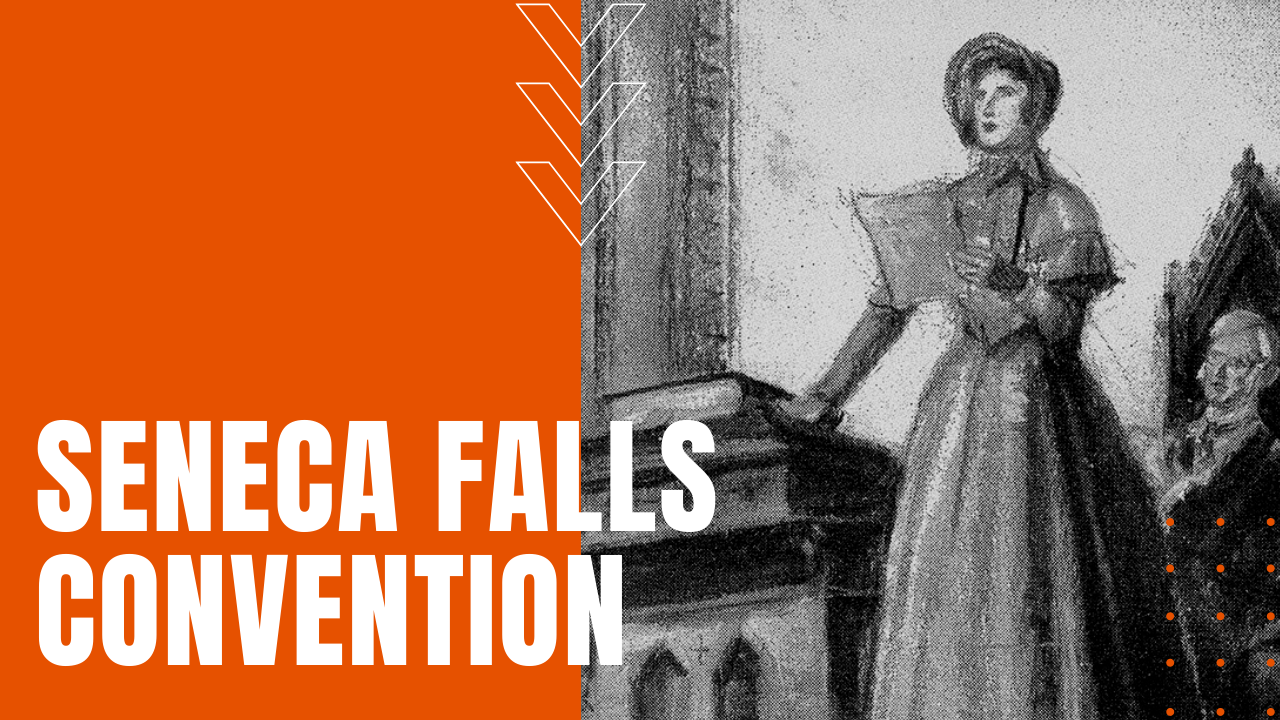The Seneca Falls Convention of 1848

First billed as the Woman’s Rights Convention, on July 19th and 20th, 1848, 300 men and women convened at the Wesleyan Chapel in Seneca Falls, New York, where abolitionist and women’s rights advocate, Elizabeth Cady Stanton opened the meeting by saying,
“We are assembled to protest against a form of government, existing without the consent of the governed—to declare our right to be free as man is free, to be represented in the government which we are taxed to support, to have such disgraceful laws as give man the power to chastise and imprison his wife, to take the wages which she earns, the property which she inherits, and, in case of separation, the children of her love.”
Elizabeth Cady Stanton
Who Organized the Seneca Falls Convention?
Organized by abolitionists and women’s rights advocates, Elizabeth Cady Stanton, Lucretia Mott and her sister Martha Coffin Wright, Mary M’Clintock and Jane Hunt, the five women drafted their “Declaration of Sentiments” around Hunt’s tea table, creating a document inspired by the United States Declaration of Independence.
Their manifesto began with 19 “abuses and usurpations” which men had created to destroy a woman’s “confidence in her own powers, to lessen her self-respect, and to make her willing to lead a dependent and abject life.” The convention then went on to draft 11 resolutions on women’s rights, each one demanding that women be treated equally as men.
The resolutions called on all Americans to consider any law that made women inferior to men as having “no force or authority,” demanding equal rights within the church and equal access to jobs. The ninth resolution—the right for women to vote—was at first rejected by the body of like-minded men and women, yet its eventual passage would lead to the core tenant of the woman’s suffrage movement over the years to come.
While The Seneca Falls Convention was the first formal ignition point in the woman’s suffrage movement, it would take an additional 72 years of organized protest before American women at long last gained the right to vote. Ratified on August 18th, 1920, the passage of the 19th Amendment to the U.S. Constitution for the first time in American history, made men and women equal at the voting booth.
